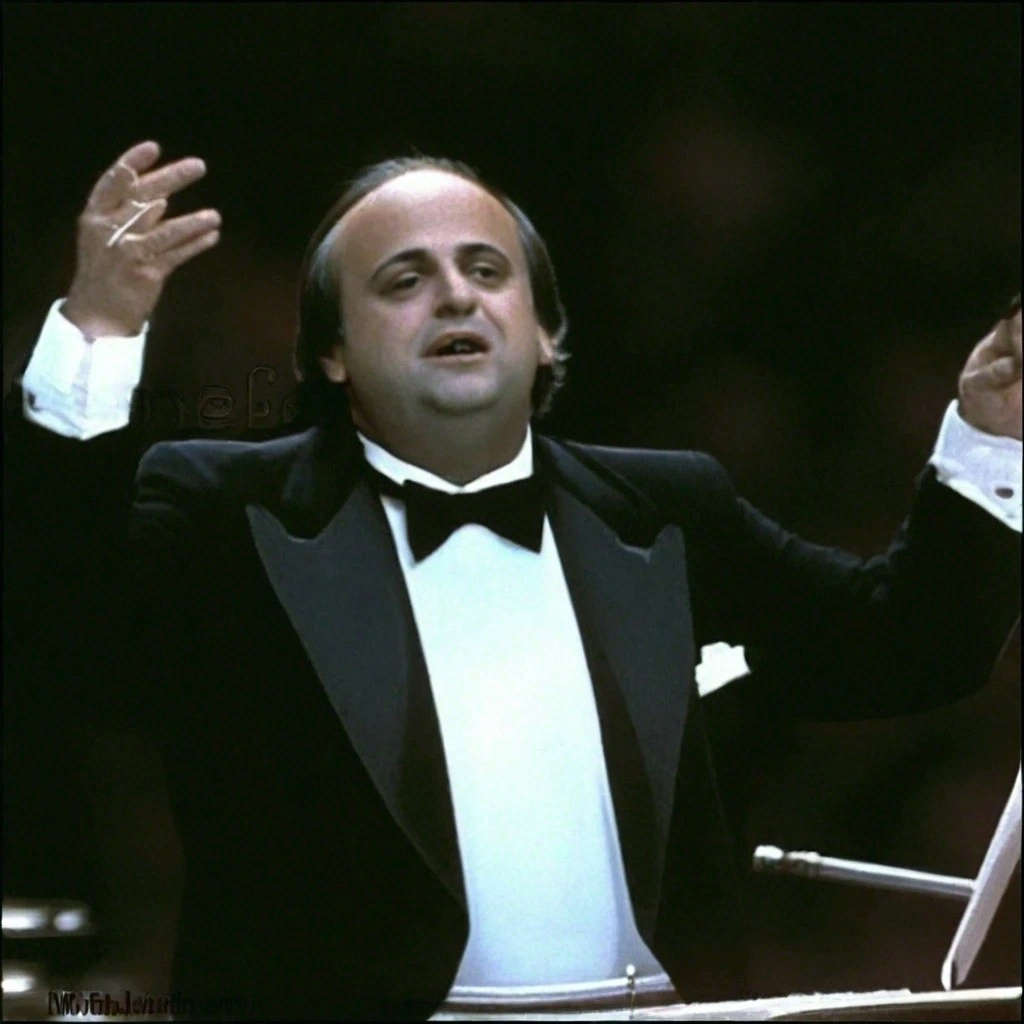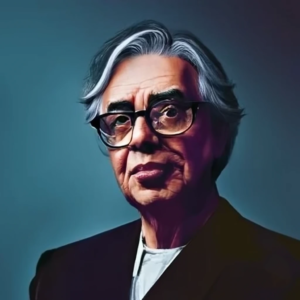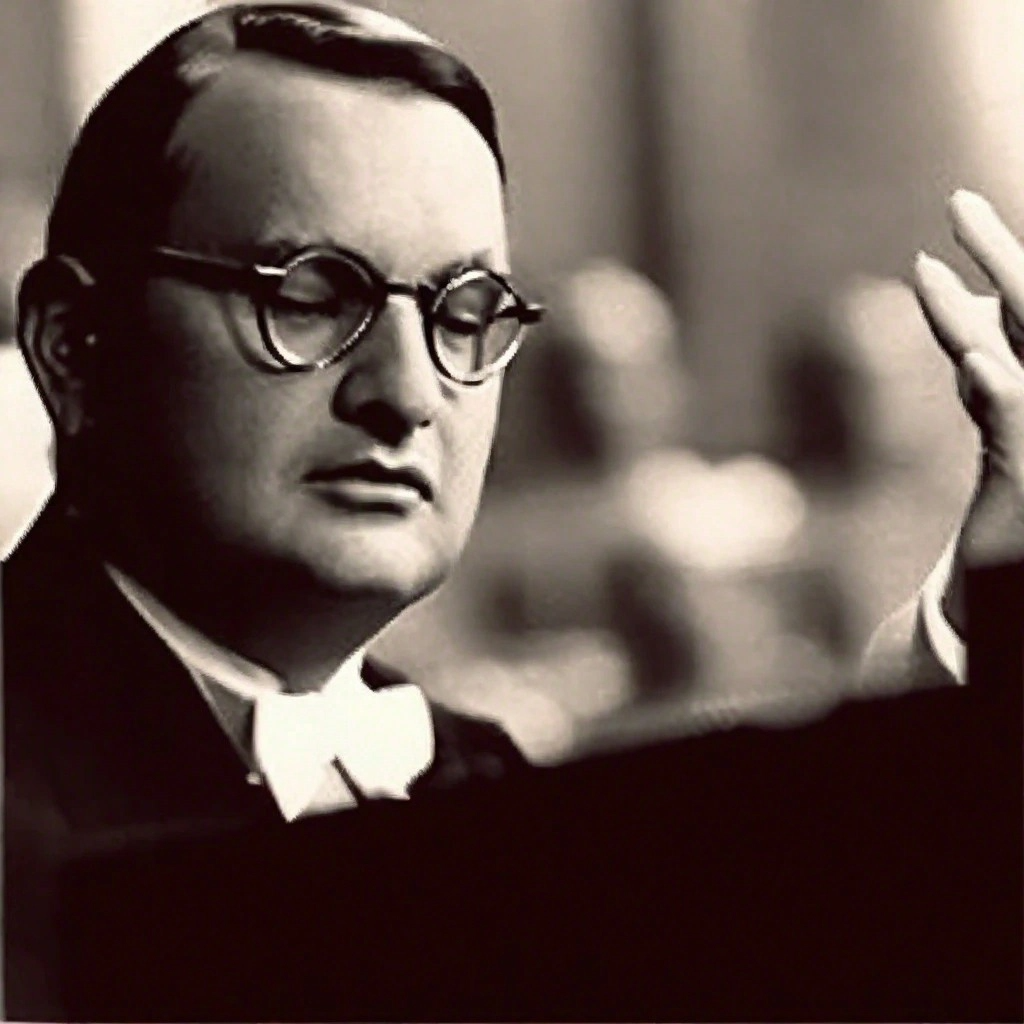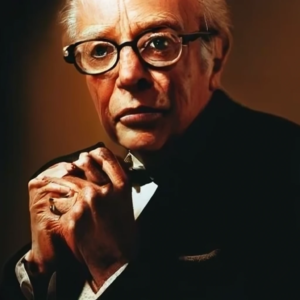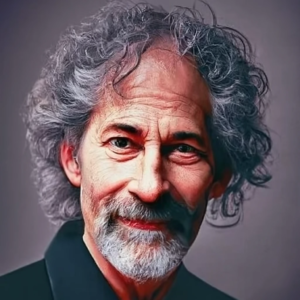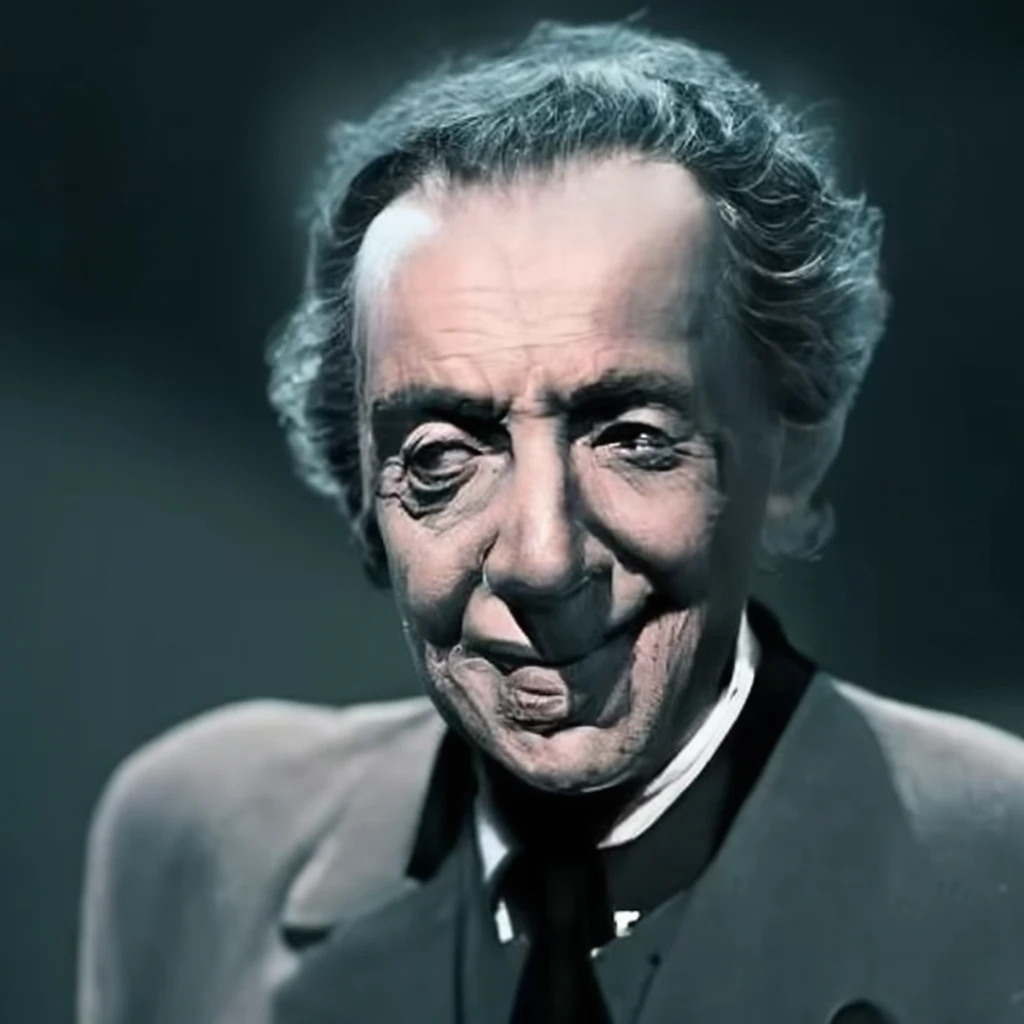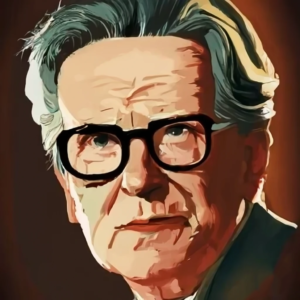Introduction: Nino Rota - Maestro of Melodies
Nino Rota, a name synonymous with timeless melodies and captivating compositions, stands as one of the most revered film composers in cinematic history. Born on December 3, 1911, in Milan, Italy, Rota’s journey into the world of music began at an early age, foreshadowing a career marked by brilliance and innovation.
With a prodigious talent that emerged in his youth, Rota quickly garnered attention for his remarkable aptitude in music. His early years were spent honing his skills under the guidance of esteemed mentors, laying the foundation for what would become a prolific and illustrious career.
Rota’s musical prowess spanned across various genres and forms, showcasing his versatility and ingenuity as a composer. From symphonies to operas, his compositions exuded a rich tapestry of emotions, seamlessly weaving together melodies that resonated with audiences worldwide.
However, it was in the realm of film scoring that Rota truly made his mark, leaving an indelible imprint on the cinematic landscape. Collaborating with visionary directors such as Federico Fellini and Francis Ford Coppola, Rota crafted scores that not only complemented the visuals but also elevated the storytelling to new heights.
His unique ability to capture the essence of a film through music earned him widespread acclaim and numerous accolades, including multiple Academy Awards for Best Original Score. Rota’s collaborations with Fellini, in particular, produced some of the most iconic soundtracks in cinema history, including the unforgettable themes from “La Dolce Vita” and “8½”.
Beyond his contributions to the world of cinema, Rota’s influence extended far beyond the silver screen, permeating into the realms of classical and popular music alike. His compositions transcended cultural boundaries, leaving an indelible legacy that continues to inspire generations of musicians and composers to this day.
In this article, we delve into the life and work of Nino Rota, exploring the various facets of his career and the enduring impact of his musical genius. From his early years and influences to his artistic evolution and lasting legacy, join us on a journey through the life and music of one of the most celebrated composers of the 20th century.
Early Years and Influences: Nurturing a Musical Prodigy
Nino Rota’s journey into the realm of music began in the enchanting city of Milan, Italy, where he was born on December 3, 1911, into a family with a deep appreciation for the arts. From a tender age, Rota exhibited an innate musical talent that would shape the course of his life and career.
Growing up in a household steeped in culture and creativity, Rota was exposed to a diverse array of musical influences that fueled his passion for composition. His father, Giovanni Rota, a renowned pianist and conductor, provided young Nino with early exposure to classical music, instilling in him a profound love for the art form.
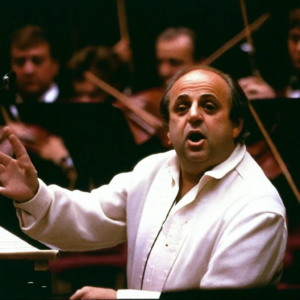 Under the guidance of his father, Rota began his formal musical education, studying piano and composition with unwavering dedication and zeal. His exceptional abilities quickly became apparent, earning him recognition as a child prodigy with boundless potential.
Under the guidance of his father, Rota began his formal musical education, studying piano and composition with unwavering dedication and zeal. His exceptional abilities quickly became apparent, earning him recognition as a child prodigy with boundless potential.
In addition to his classical training, Rota drew inspiration from the vibrant cultural milieu of Milan, immersing himself in the city’s thriving artistic community. From the grand opera houses to the intimate concert halls, Milan offered a wealth of opportunities for a budding composer to expand his horizons and refine his craft.
As Rota matured, his musical sensibilities were further shaped by encounters with a diverse array of influences, ranging from the rich traditions of Italian opera to the avant-garde movements sweeping across Europe. He devoured the works of composers past and present, assimilating their techniques and styles into his own burgeoning musical vocabulary.
One of the most significant influences on Rota’s early development as a composer was the renowned Italian composer and conductor, Alfredo Casella. Under Casella’s mentorship, Rota flourished, honing his skills and broadening his artistic horizons under the guidance of a master.
Rota’s formative years were characterized by a relentless pursuit of excellence and a tireless dedication to his craft. His insatiable curiosity and boundless creativity fueled a constant exploration of new musical territories, laying the groundwork for the innovative and distinctive style that would come to define his oeuvre.
In the next section, we will delve deeper into Rota’s artistic evolution and the emergence of his unique musical identity, tracing the trajectory of his career from his early successes to his eventual ascent to international acclaim.
Artistic Evolution and Musical Identity: The Emergence of a Visionary Composer
Nino Rota’s artistic evolution and musical identity are marked by a trajectory of innovation, experimentation, and a deep-rooted commitment to storytelling through sound. As he navigated the vast landscape of music composition, Rota forged a distinct path characterized by a synthesis of tradition and modernity, tradition, and an unwavering dedication to his craft.
In his formative years, Rota’s compositions reflected the influence of his classical training and the rich musical heritage of his native Italy. Drawing inspiration from the grand operatic traditions of Verdi and Puccini, as well as the lush romanticism of composers such as Tchaikovsky and Chopin, Rota developed a melodic sensibility that resonated with audiences and critics alike.
 However, it was Rota’s collaborations with visionary filmmakers that truly propelled him into the forefront of the international music scene. Working closely with directors such as Federico Fellini, Luchino Visconti, and Francis Ford Coppola, Rota embraced the medium of film as a canvas for his musical expression, pushing the boundaries of conventional scoring and redefining the role of music in cinema.
However, it was Rota’s collaborations with visionary filmmakers that truly propelled him into the forefront of the international music scene. Working closely with directors such as Federico Fellini, Luchino Visconti, and Francis Ford Coppola, Rota embraced the medium of film as a canvas for his musical expression, pushing the boundaries of conventional scoring and redefining the role of music in cinema.
One of the hallmarks of Rota’s musical identity is his ability to capture the essence of a film and its characters through his compositions. Whether evoking the whimsical charm of “La Strada” or the haunting melancholy of “The Godfather,” Rota’s scores possess an emotional depth and nuance that elevate the cinematic experience to new heights.
Central to Rota’s artistic evolution was his willingness to embrace innovation and experimentation in his work. From incorporating elements of jazz and popular music into his scores to exploring unconventional instrumentation and sonic textures, Rota’s compositions defied easy categorization, reflecting a restless creative spirit unbound by convention.
At the heart of Rota’s musical identity lies a profound empathy and sensitivity to the human experience. His compositions resonate with a universal emotional truth, speaking to the joys, sorrows, and complexities of the human condition with eloquence and grace.
Throughout his career, Rota remained true to his artistic vision, crafting scores that transcended the confines of genre and medium to touch the hearts and minds of audiences around the world. His enduring legacy serves as a testament to the power of music to transcend boundaries and unite us in a shared experience of beauty, wonder, and humanity.
In the following sections, we will explore Rota’s career milestones and achievements, as well as his lasting impact on the worlds of cinema and music.
Career Milestones and Achievements: A Trailblazing Journey Through Music and Film
Nino Rota’s illustrious career is punctuated by a series of groundbreaking milestones and remarkable achievements that solidified his status as one of the preeminent composers of the 20th century. From his early successes in Italian cinema to his triumphant collaborations with Hollywood’s elite, Rota’s journey is a testament to his unparalleled talent and enduring legacy.
One of the defining moments in Rota’s career came with his collaboration with director Federico Fellini, a partnership that would yield some of the most iconic and beloved films in cinematic history. Their first collaboration, “The White Sheik” (1952), marked the beginning of a fruitful creative relationship that would span over two decades and produce such masterpieces as “La Strada” (1954), “Nights of Cabiria” (1957), and “La Dolce Vita” (1960).
Rota’s scores for Fellini’s films were groundbreaking in their innovation and emotional depth, capturing the essence of the director’s surreal and poetic vision with unparalleled precision. His haunting melodies and evocative orchestrations became indelibly linked with the imagery of Fellini’s films, earning Rota widespread acclaim and international recognition.
In addition to his collaborations with Fellini, Rota also made significant contributions to the world of Hollywood cinema, earning acclaim for his work on such classics as “Romeo and Juliet” (1968) and “The Godfather” (1972). His score for “The Godfather,” in particular, earned him widespread acclaim and accolades, including an Academy Award for Best Original Score.
Throughout his career, Rota’s music transcended the confines of the silver screen, permeating into the realms of opera, theater, and concert music. His compositions, ranging from symphonies and chamber music to operas and ballets, showcased his remarkable versatility and mastery of form, earning him accolades and admiration from audiences and critics alike.
In recognition of his contributions to the world of music and film, Rota was honored with numerous awards and distinctions, including multiple Academy Award nominations and the prestigious Golden Globe Award for Best Original Score. His enduring legacy continues to inspire generations of musicians and composers, cementing his place as one of the most influential figures in the history of cinema and music.
In the next section, we will explore the social and cultural impact of Rota’s music, examining how his compositions have shaped and influenced the world around us.
Social and Cultural Impact: Nino Rota's Musical Tapestry
Nino Rota’s music transcends mere entertainment; it serves as a mirror reflecting the social and cultural landscapes of the times in which it was created. Through his compositions, Rota captured the essence of the human experience, offering a poignant commentary on society, politics, and the human condition.
At the heart of Rota’s social and cultural impact is his ability to evoke a sense of nostalgia and longing, transporting listeners to bygone eras and distant lands. His scores for films such as “The Godfather” and “The Leopard” not only enhance the cinematic experience but also serve as vivid portraits of the societies in which they are set, immersing audiences in the sights, sounds, and emotions of another time and place.
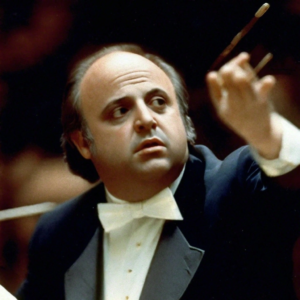 Rota’s music also played a significant role in shaping the cultural identity of Italy, both at home and abroad. His collaborations with directors such as Federico Fellini and Luchino Visconti helped to define the Italian cinematic renaissance of the 20th century, showcasing the country’s rich cultural heritage and artistic prowess on the world stage.
Rota’s music also played a significant role in shaping the cultural identity of Italy, both at home and abroad. His collaborations with directors such as Federico Fellini and Luchino Visconti helped to define the Italian cinematic renaissance of the 20th century, showcasing the country’s rich cultural heritage and artistic prowess on the world stage.
Furthermore, Rota’s compositions have left an indelible mark on popular culture, permeating into the collective consciousness and becoming synonymous with the films they accompany. From the iconic theme of “The Godfather” to the haunting melodies of “La Dolce Vita,” Rota’s music has become ingrained in the cultural fabric of society, transcending generational divides and enduring the test of time.
Beyond the realm of film, Rota’s music continues to resonate with audiences around the world, inspiring countless musicians, composers, and artists across a myriad of genres. His influence can be felt in everything from classical music to pop, jazz, and beyond, serving as a source of inspiration and creative exploration for generations to come.
Moreover, Rota’s commitment to collaboration and cross-cultural exchange fostered a spirit of unity and understanding in an increasingly divided world. His willingness to embrace diverse influences and incorporate them into his compositions speaks to the power of music as a universal language capable of transcending barriers and fostering connections between people of different backgrounds and cultures.
In the final section of our exploration, we will delve into the personal life of Nino Rota, offering a glimpse behind the scenes of the maestro’s extraordinary career and the man behind the music.
Personal Life: Behind the Curtain with Nino Rota
While Nino Rota’s musical achievements have left an indelible mark on the world, his personal life offers a fascinating glimpse into the man behind the music. Beyond the grandeur of the concert hall and the glamour of the silver screen, Rota’s life was characterized by a rich tapestry of experiences, relationships, and passions that shaped his identity both as an artist and as a human being.
Born into a family with a deep appreciation for the arts, Rota’s upbringing instilled in him a love for music and culture from an early age. His father, Giovanni Rota, a respected pianist and conductor, provided young Nino with a nurturing environment in which to cultivate his talents and pursue his dreams.
Despite his prodigious musical abilities, Rota remained humble and unassuming, approaching his craft with a sense of reverence and dedication. He was known for his quiet demeanor and introspective nature, preferring to let his music speak for itself rather than seek the spotlight or accolades.
In his personal relationships, Rota was known for his warmth, generosity, and unwavering loyalty. He forged deep and lasting friendships with collaborators and colleagues, fostering a sense of camaraderie and mutual respect that extended beyond the confines of the studio or stage.
Rota’s personal life was not without its challenges, however. Like many artists, he grappled with periods of self-doubt and creative struggle, navigating the highs and lows of a career marked by both triumphs and setbacks. Yet, through it all, he remained steadfast in his commitment to his art, drawing inspiration from the world around him and the experiences that shaped his journey.
Outside of music, Rota cultivated a diverse range of interests and passions, from literature and philosophy to travel and cuisine. He was an avid reader and intellectual, with a voracious appetite for knowledge and discovery that fueled his creative imagination and enriched his compositions with depth and complexity.
In his later years, Rota continued to compose with the same fervor and creativity that defined his early career, remaining active in the world of music until his passing on April 10, 1979. Though he may be gone, his music lives on as a testament to the enduring power of art to inspire, uplift, and transcend the boundaries of time and space.
In the final section of our exploration, we will delve into Rota’s enduring legacy and historical significance, examining how his contributions continue to shape the worlds of music and film to this day.
Discography and Creative Works: A Melodic Legacy
Nino Rota’s discography and creative works stand as a testament to his prolific output and enduring legacy in the world of music. Throughout his illustrious career, Rota composed a vast array of compositions spanning across film, opera, theater, and concert music, each bearing his distinctive imprint of melody, emotion, and storytelling.
Rota’s discography is as diverse as it is extensive, encompassing scores for over 150 films and collaborations with some of the most iconic directors in cinematic history. From his early successes in Italian neorealism to his later triumphs in Hollywood, Rota’s music traversed genres, styles, and cultures, leaving an indelible mark on the silver screen.
One of Rota’s most celebrated collaborations was with director Federico Fellini, with whom he worked on such classics as “La Strada,” “Nights of Cabiria,” and “8½.” His scores for Fellini’s films are characterized by their evocative melodies, whimsical orchestrations, and profound emotional depth, serving as the perfect complement to the director’s surreal and poetic visions.
In addition to his work with Fellini, Rota also made significant contributions to the world of Hollywood cinema, earning acclaim for his scores for such classics as “Romeo and Juliet,” “The Godfather,” and “Rocco and His Brothers.” His music for “The Godfather,” in particular, remains one of the most iconic and influential film scores of all time, earning Rota widespread acclaim and recognition.
Beyond the realm of film, Rota’s creative output extended into the realms of opera, theater, and concert music. He composed numerous operas, including “Il cappello di paglia di Firenze” and “Il cappello di paglia di Firenze,” as well as ballets, symphonies, and chamber music. His compositions are characterized by their melodic richness, harmonic sophistication, and profound emotional resonance, earning him admiration and acclaim from audiences and critics alike.
Rota’s enduring legacy continues to resonate with audiences around the world, inspiring generations of musicians, composers, and filmmakers to this day. His music remains as relevant and captivating as ever, serving as a timeless reminder of the power of art to touch the hearts and minds of people across cultures and generations.
In the final section of our exploration, we will reflect on Rota’s enduring legacy and historical significance, examining how his contributions continue to shape the worlds of music and film in the 21st century and beyond.
Fan Engagement and Community Building: Celebrating Nino Rota's Musical Legacy
Nino Rota’s music has garnered a dedicated following of fans around the world who are drawn to the timeless melodies, evocative compositions, and captivating storytelling that define his work. Through various channels of fan engagement and community building, Rota’s admirers have come together to celebrate his musical legacy, share their passion for his music, and ensure that his contributions continue to be celebrated for generations to come.
One of the primary avenues for fan engagement is through online communities and forums dedicated to discussing Rota’s music, sharing insights, and connecting with fellow enthusiasts. Websites, social media groups, and forums provide platforms for fans to engage in lively discussions, exchange recommendations, and discover new aspects of Rota’s vast body of work.
In addition to online communities, fan clubs and organizations play a crucial role in fostering a sense of camaraderie among Rota’s admirers and promoting his music to wider audiences. These clubs often organize events, screenings, and concerts dedicated to Rota’s music, providing opportunities for fans to come together in person and celebrate their shared love for his compositions.
Furthermore, fan-driven initiatives such as tribute albums, cover performances, and fan art exhibitions serve as creative expressions of appreciation for Rota’s music and its enduring impact on popular culture. These projects not only showcase the diversity of Rota’s fanbase but also demonstrate the profound influence that his music continues to have on artists and musicians across generations.
Rota’s music has also inspired a new generation of fans through its inclusion in various forms of media, including film, television, and advertising. Whether through reissues of classic soundtracks, sampled beats in hip-hop tracks, or references in popular culture, Rota’s compositions remain as relevant and influential as ever, captivating audiences of all ages and backgrounds.
Moreover, educational initiatives and outreach programs help to introduce Rota’s music to younger audiences and cultivate an appreciation for classical and film music. Workshops, lectures, and educational materials provide insights into Rota’s creative process, musical techniques, and the historical context of his compositions, enriching the understanding and enjoyment of his music for future generations.
In summary, fan engagement and community building are essential components of celebrating Nino Rota’s musical legacy and ensuring that his contributions continue to be cherished and celebrated for years to come. Through online communities, fan clubs, creative initiatives, and educational outreach, fans come together to honor Rota’s music, connect with fellow enthusiasts, and inspire new generations of listeners to discover the magic of his timeless melodies.
Enduring Legacy and Historical Significance: Nino Rota's Musical Immortality
Nino Rota’s legacy extends far beyond the realm of music; it is a testament to the enduring power of artistic expression to transcend time, space, and cultural boundaries. As one of the most celebrated composers of the 20th century, Rota’s contributions to the worlds of cinema, classical music, and popular culture have left an indelible mark on the fabric of human history, shaping the way we perceive and experience the world around us.
At the heart of Rota’s enduring legacy is his unparalleled ability to evoke emotion, capture the human experience, and transport listeners to another realm through his music. Whether through the haunting melodies of “The Godfather,” the whimsical orchestrations of “La Strada,” or the romantic sweep of “Romeo and Juliet,” Rota’s compositions resonate with a timeless beauty and universality that transcends the boundaries of language and culture.
Moreover, Rota’s collaborations with visionary filmmakers such as Federico Fellini and Francis Ford Coppola have helped to redefine the role of music in cinema, elevating the art form to new heights and inspiring generations of filmmakers and composers to follow in his footsteps. His innovative use of melody, harmony, and rhythm to enhance storytelling and evoke mood and atmosphere has set a standard of excellence that continues to be emulated and admired to this day.
Rota’s influence can be felt not only in the realm of film but also in the broader landscape of classical and popular music. His compositions have been performed and recorded by orchestras and ensembles around the world, ensuring that his music reaches audiences of all ages and backgrounds. Moreover, his melodies have been sampled, adapted, and reinterpreted by artists across a myriad of genres, from jazz and hip-hop to electronic and beyond, attesting to the enduring relevance and versatility of his musical legacy.
Beyond his artistic achievements, Rota’s historical significance lies in his role as a cultural ambassador, bridging the gap between East and West, tradition and modernity, through his music. His ability to seamlessly blend elements of Italian opera, Neapolitan folk music, and American jazz into his compositions speaks to the interconnectedness of cultures and the universality of human experience, fostering a sense of unity and understanding in an increasingly divided world.
In conclusion, Nino Rota’s enduring legacy and historical significance are a testament to his remarkable talent, creativity, and humanity. Through his timeless melodies and evocative compositions, he has touched the hearts and minds of millions, leaving behind a musical legacy that will continue to inspire, uplift, and enrich the lives of generations to come.
Conclusion and Reflections: The Musical Odyssey of Nino Rota
In conclusion, the life and music of Nino Rota represent a captivating odyssey through the realms of creativity, innovation, and artistic expression. From his humble beginnings in Milan to his meteoric rise to international acclaim, Rota’s journey is a testament to the power of passion, perseverance, and the unwavering pursuit of excellence.
Throughout his illustrious career, Rota left an indelible mark on the worlds of cinema, classical music, and popular culture, crafting scores that have become synonymous with the films they accompany and melodies that have resonated with audiences around the world. His ability to capture the essence of a story, evoke emotion, and transcend cultural boundaries through his music is a testament to his unparalleled talent and artistic vision.
Moreover, Rota’s enduring legacy extends beyond his musical achievements to encompass his role as a cultural ambassador, bridging divides and fostering connections between people of different backgrounds and cultures through the universal language of music. His compositions serve as a timeless reminder of the power of art to inspire, uplift, and unite us in a shared experience of beauty and wonder.
As we reflect on the life and music of Nino Rota, we are reminded of the transformative power of creativity to shape our world and illuminate the human experience. His melodies continue to echo through the corridors of time, reminding us of the enduring legacy of one of the greatest composers of the 20th century.
In the end, Nino Rota’s music serves as a beacon of hope, a source of inspiration, and a testament to the boundless potential of the human spirit. His melodies will continue to inspire, uplift, and enrich the lives of generations to come, ensuring that his legacy remains alive in the hearts and minds of music lovers everywhere.
